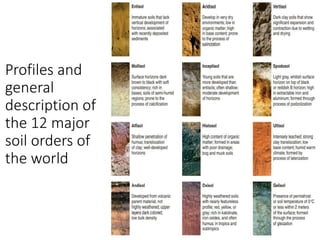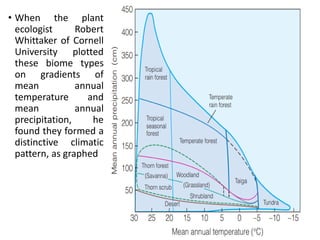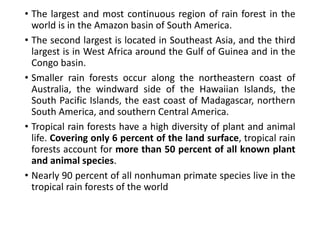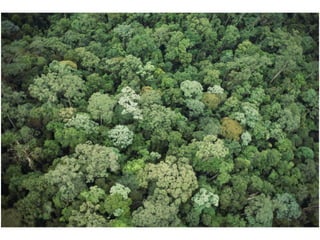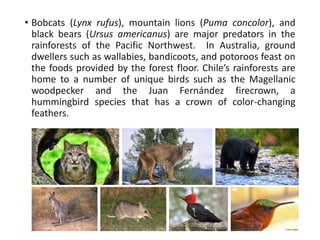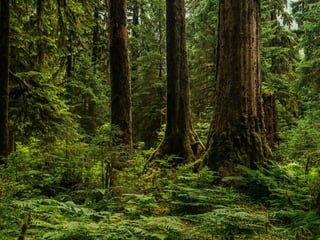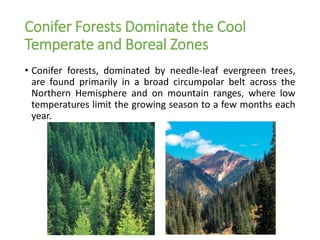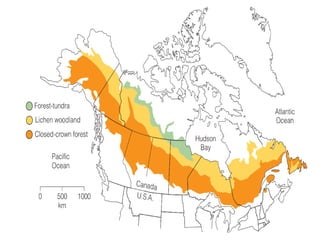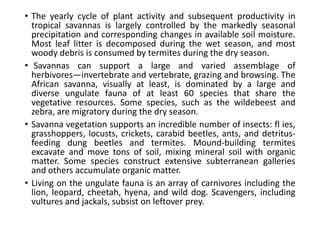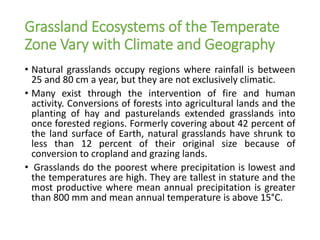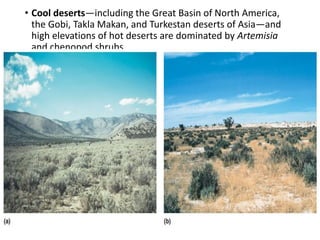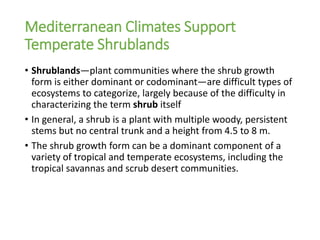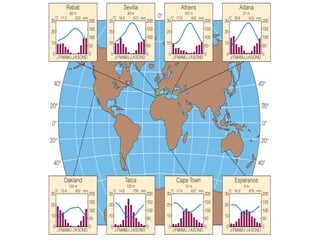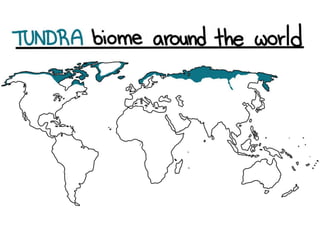1. Terrestrial environments can be characterized by their vegetation like forests, grasslands, and shrublands, as well as their physical and chemical properties like soil.
2. Soil provides the foundation for plant growth and serves as a habitat for animals and a system to break down waste.
3. Biomes are large regions defined by their dominant plant life and climate. Major terrestrial biomes include tropical forests, temperate forests, conifer forests, tropical savannas, temperate grasslands, shrublands, tundra, and deserts.




